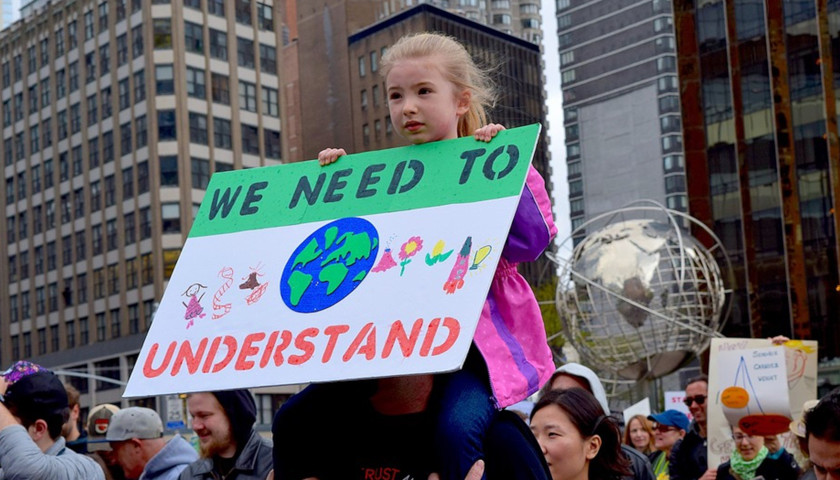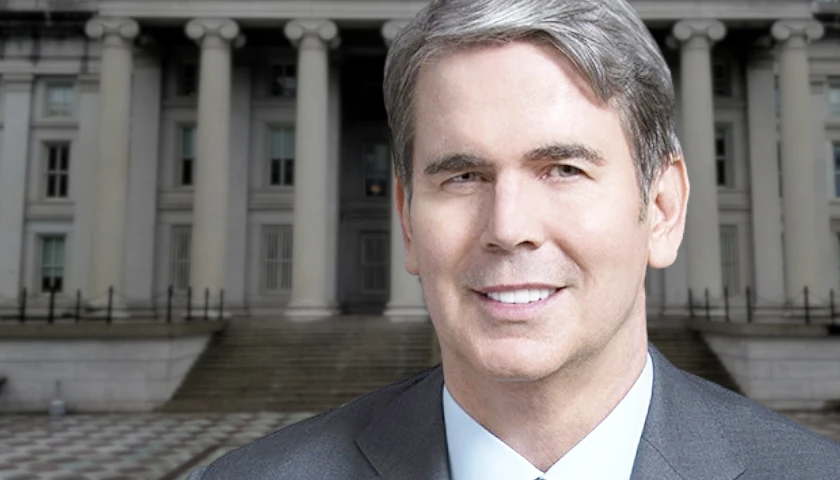by Bill Wirtz
For months, young climate marchers have taken over Europe and the US. Now we know what they actually want – and it’s exactly what we thought it would be.
Why They March
If you’re unfamiliar with the “Youth4Climate” or “Fridays for Future” movement, it’s probably because, despite having existed in the United States since earlier this year, the phenomenon is more widely covered in Europe. Sixteen-year-old Greta Thunberg skips school in protest on Fridays, demanding that politicians do much more to fight against climate change. Reporters have latched on to her appeal, making her the poster child of a (very) young environmentalist generation. For weeks now, newspapers have been inundated with pictures of large protests for climate action, featuring the funniest signs and leading politicians to describe it as inspirational.
Up until now, it wasn’t entirely clear what the climate marchers were actually hoping to achieve. For the most part, activists would merely bemoan the fact that politicians and the rich are standing idly by as the planet moves towards its inevitable collapse in 12 years. But with Greta getting closer to the age of 18, when she would officially be allowed to run for parliament in her home country of Sweden, putting forward some policy prescriptions becomes crucial.
They’ll start slowly, merely demanding that all carbon emissions stop immediately. An example? Cancel the vital expansion of Copenhagen airport, which she refers to in this tweet:
Perhaps the most dangerous misconception about the climate crisis is that we have to “lower” our emissions. Because that is far from enough. Our emissions have to stop if we are to stay below 1,5/2°C warming.
That rules out most of today’s politics. Including airport expansions..— Greta Thunberg (@GretaThunberg) March 26, 2019
The world is ending, and the youth are reminding us that we need to act. It’s the perfect combination for activism: Since you’re not held up to the political standards of adults, you have instant sympathy, and the media factor is enormous. Everyone can feel virtuous in applauding the young climate marcher crowd. That is, until they find out what this will mean in practice.
Exploding Prices
The number of countries participating in the “Fridays for Future” protests is large, but it was German activists who were among the first to publish a comprehensive list of demands that echo the sentiments of those on the streets. The document demands compliance with the 2015 Paris Climate Accord goals to not overstep the 1.5°C temperature increase mark.
To do so, Germany (a country that relies significantly on industrial production and international trade) would need to reach zero net emissions by 2035, a complete phasing-out of coal energy by 2030, and 100 percent use of renewable energy sources by 2035. Germany started to phase-out nuclear energy after the incident in Fukushima, Japan, in 2011, and has since relied more heavily on coal and gas in order to maintain energy stability. This “Energiewende” (German for “energy shift”) has resulted in increased prices for electricity.
But beyond a mere shift in the country’s energy policy, the marchers demand a hefty carbon tax, which they set at €180 ($200) per ton of CO2. Even the economist Joseph Stiglitz, who can hardly be described as an advocate for the market economy, puts that price tag at only $40-80 by next year and only half of the German estimate by 2030.
German magazine Der Spiegel calculated what a $200 CO2 price tag would mean in practice for consumers. Here are a few examples:
- liter of fuel: price increase of 48 cents
- one year of electricity for an average household: a price increase of $358
- liter of milk: price increase of 19 cents
- kilo of beef: price increase of $3
- new iPhone: price increase of $16
- intercontinental flight Europe-US: price increase of $742
- flight from Europe to the Middle East: price increase of $2,382
The fuel price increase, in particular, should raise a flag. If only there were a recent example of a reaction to politicians attempting to implement a similar tax…
The Generation of Haves
Taking the highest possible estimate for the potential costs of a ton of CO2 and the resulting explosion of consumer prices shows the real face of modern-day environmentalism: entitled people who don’t have any financial difficulties wanting not to find innovative solutions, but rather to curb consumption altogether.
If you’re upper-middle-class, 19 cents more per liter of milk won’t be the end of the world. But as these costs add up, low-income households will soon be unable to afford certain products. And that is the true end goal: bankrupting poor people out of consumption. This comes from a generation of haves who reside in Germany and many of the Scandinavian countries is all the more breathtaking.
Air travel consumes less and less fuel, and people are increasingly aware of the act of littering as both an aesthetic and environmental problem. Expecting considerable changes immediately due to youth outrage is not feasible, and most of all, it will hurt low-income households who are already struggling to make ends meet.
The day they realize what their policy prescriptions entail, these climate marchers will put on their yellow vests.
– – –
Bill Wirtz is a Young Voices Advocate. His work has been featured in several outlets, including Newsweek, Rare, RealClear, CityAM, Le Monde and Le Figaro. He also works as a Policy Analyst for the Consumer Choice Center.




